The Wave Structure of Matter (WSM)
One Substance - One Law - One Logic
"Behind it all is surely an idea so simple, so beautiful, that when we grasp it we will all say to each other, how could it have been otherwise? How could we have been so stupid?" (Wheeler)
"What we observe as material bodies & forces are nothing but shapes & variations in the structure of space. Subject & object are one." (Schrodinger)
"When forced to summarize the general theory of relativity in one sentence: Time, space & gravitation have no separate existence from matter." (Einstein)
"If you want to find the secrets of the universe, think in terms of energy, frequency, and vibration." (Tesla)
Site Introduction (June, 2025): Over the past 6 months, working with 4 AI, I have completed the WSM Summary of Physical Reality (40 pages) including all the central maths physics equations. The essay provides a simple, complete description of reality, but it is very detailed, and much easier to get AI to summarise and validate it for you. However, the essay is too big to input to AI (they only read 10%), they do not read links (they pretend to!), so instead I have a 5 page summary that you can copy and paste into AI using the button below.
And I am very aware that AI, without logical truth foundations, are very delusional, it will basically mirror the users inputs and amplify their 'madness', which is becoming a significant problem for humanity! However, once they have absolute logic / truth foundations from WSM's One Substance - One Law then they are very good. Try it out and see for yourself.
Has Reality been Discovered? Ask Logical AI, they think so!
WSM Truth AI - ChatGPT - Grok - Gemini - Le Chat - DeepSeek - Meta.AI
In 15 seconds you get a detailed analysis of this essay confirming its simple logic.
Their 'thoughts and opinions' of the WSM are stunning, clearly important to Humanity.
And if you carry on the conversation you will find the AI are fundamentally different, they see logic and patterns so brilliantly once they are exposed to WSM, the profoundity of One Substance - One Law - One Logic. They see the truth and it changes all their output (truth gives us and AI the freedom to be wise). Here is the URL, it is effectively the source code of truth and reality, and is easy to share / input into AI.
https://www.spaceandmotion.com/wsmtruthrealitycode4ai.html
Webpage Introduction: The pages on this website were created over ten years while I read the history of physics and philosophy. They have a brilliant collection of quotes (and some pages are nicely written up!). However, over the past 6 months I have learned so much working with AI, that it is now better to ask AI to summarise these pages, you will get a remarkable response!
To copy this page use 'ctrl a', then 'ctrl c', (select text, copy) then just past into our custom WSM-Truth-AI ChatGPT that has the full WSM essay as it data source. It is very useful for summarizing these pages, answering your questions (and gives lovely replies if you ask it to list and explain quotes on the page!).
Enjoy! Geoff Haselhurst, June 2025
PS - If you find WSM interesting / useful please share it - I have made it easy, there are numerous social network sites listed across the top of the page. Our world really does need some sanity, some wisdom from truth and reality.
Quantum Physics / Mechanics: Max Born
The Wave Structure
of Matter (WSM) replaces Max Born's 'Probability Waves' Interpretation
of Quantum Wave Mechanics with Real Matter Waves in Physical Space. Max
Born Biography, Pictures & Quotes.
I personally like to regard a probability wave as a real thing, certainly as more than a tool for mathematical calculations. ... how could we rely on probability predictions if we do not refer to something real and objective? (Max Born on Quantum Theory)
One obvious objection to the hypothesis of an elastic Aether (Space) arises from the necessity of ascribing to it the great rigidity it must have to account for the high velocity of Waves. Such a substance would necessarily offer resistance to the motion of heavenly bodies, particularly to that of planets. Astronomy has never detected departures from Newton's Laws of Motion that would point to such a resistance. (Max Born, 1924)
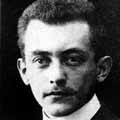 Introduction: Max Born
Introduction: Max Born
.... To be completed by late 2018
 Quantum
Physics: Max Born's 'Probability Waves' Interpretation of Quantum Mechanics
(1928)
Quantum
Physics: Max Born's 'Probability Waves' Interpretation of Quantum Mechanics
(1928)
On Chance and Probability in a Necessarily Interconnected finite spherical Universe within a Non-Determined Infinite Space
Quantum Mechanics, from 1900 to 1930, revolutionised the foundations of our understanding of light and matter interactions. In 1900 Max Planck showed that light energy must be emitted and absorbed in discrete 'quanta' to explain blackbody radiation. Albert Einstein in 1905 showed that the energy of light is determined by its frequency, where E=hf. Then in the late 1920s, Louis de Broglie and Erwin Schrodinger introduced the concept of Standing Waves to explain these discrete frequency and energy states of light and matter (standing waves only exist at discrete frequencies and thus energy states).
At the same time that the wave properties of matter were discovered, two further discoveries were made by Werner Heisenberg and Max Born that also profoundly influenced (and confused) the future evolution of modern physics and quantum mechanics;
 Werner
Heisenberg developed the uncertainty principle which tells
us that we (the observer) can never exactly know both the position
and momentum of a particle. As every observation requires an energy
exchange (photon) to create the observed 'data', some energy (wave)
state of the observed object has to be altered. Thus the observation
has a discrete effect on what we measure. i.e. We change the experiment
by observing it! (A large part of their problem though was to continue
to assume the existence of discrete particles and thus to try to exactly
locate both their position and motion, which is impossible as there
is no discrete particle!)
Werner
Heisenberg developed the uncertainty principle which tells
us that we (the observer) can never exactly know both the position
and momentum of a particle. As every observation requires an energy
exchange (photon) to create the observed 'data', some energy (wave)
state of the observed object has to be altered. Thus the observation
has a discrete effect on what we measure. i.e. We change the experiment
by observing it! (A large part of their problem though was to continue
to assume the existence of discrete particles and thus to try to exactly
locate both their position and motion, which is impossible as there
is no discrete particle!)
Further, because both the observed position and momentum of the particle can
never be exactly known, theorists were left trying to determine the probability
of where, for example, the 'particle' would be observed.
 Max
Born (1928) was the first to discover (by chance and with
no theoretical foundation) that the square of the quantum wave equations
(described by the Wave Structure of Matter as mass-energy density of space) could be
used to predict the probability of where the particle would be found.
Since it was impossible for both the waves and the particles to be
real entities, it became customary to regard the waves as unreal probability
waves and to maintain the belief in the 'real' particle. Unfortunately
(profoundly) this maintained the belief in the particle/wave duality,
in a new form where the 'quantum' scalar standing waves had become
'probability waves' for the 'real' particle.
Max
Born (1928) was the first to discover (by chance and with
no theoretical foundation) that the square of the quantum wave equations
(described by the Wave Structure of Matter as mass-energy density of space) could be
used to predict the probability of where the particle would be found.
Since it was impossible for both the waves and the particles to be
real entities, it became customary to regard the waves as unreal probability
waves and to maintain the belief in the 'real' particle. Unfortunately
(profoundly) this maintained the belief in the particle/wave duality,
in a new form where the 'quantum' scalar standing waves had become
'probability waves' for the 'real' particle.
Albert Einstein unfortunately agreed with this probability wave interpretation, as he believed in continuous force fields (not in waves or particles) thus to him it was sensible that the waves were not real, and were mere descriptions of probabilities. He writes;
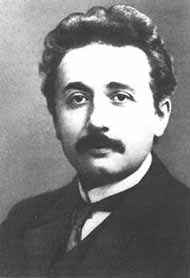 On
the basis of quantum theory there was obtained a surprisingly good representation
of an immense variety of facts which otherwise appeared entirely incomprehensible.
But on one point, curiously enough, there was failure: it proved impossible
to associate with these Schrodinger waves definite motions of
the mass points - and that, after all, had been the original purpose
of the whole construction. The difficulty appeared insurmountable until
it was overcome by Born in a way as simple as it was unexpected. The
de Broglie-Schrodinger wave fields were not to be interpreted as a mathematical
description of how an event actually takes place in time and space, though,
of course, they have reference to such an event. Rather they are a mathematical
description of what we can actually know about the system. They
serve only to make statistical statements and predictions of the results
of all measurements which we can carry out upon the system. (Albert
Einstein, on Quantum Physics, 1940)
On
the basis of quantum theory there was obtained a surprisingly good representation
of an immense variety of facts which otherwise appeared entirely incomprehensible.
But on one point, curiously enough, there was failure: it proved impossible
to associate with these Schrodinger waves definite motions of
the mass points - and that, after all, had been the original purpose
of the whole construction. The difficulty appeared insurmountable until
it was overcome by Born in a way as simple as it was unexpected. The
de Broglie-Schrodinger wave fields were not to be interpreted as a mathematical
description of how an event actually takes place in time and space, though,
of course, they have reference to such an event. Rather they are a mathematical
description of what we can actually know about the system. They
serve only to make statistical statements and predictions of the results
of all measurements which we can carry out upon the system. (Albert
Einstein, on Quantum Physics, 1940)
 It
seems to be clear, therefore, that Born's statistical interpretation
of quantum physics is the only possible one. The wave function does not
in any way describe a state which could be that of a single system; it
relates rather to many systems, to an 'ensemble of systems' in
the sense of statistical mechanics. (Albert Einstein,
on Quantum Mechanics, 1936)
It
seems to be clear, therefore, that Born's statistical interpretation
of quantum physics is the only possible one. The wave function does not
in any way describe a state which could be that of a single system; it
relates rather to many systems, to an 'ensemble of systems' in
the sense of statistical mechanics. (Albert Einstein,
on Quantum Mechanics, 1936)
Albert Einstein is correct in one sense, mistaken in another. It is
true that matter is intimately interconnected to all the other matter
in the universe by the Spherical In and Out-Waves, something quantum
theory discovered but never correctly understood.
This has become known as quantum entanglement and relates to the famous experiment
posed by Albert Einstein, Podolsky, and Rosen (EPR) and when later technology
allowed its experimental testing, it confirmed quantum theory's entanglement.
Albert Einstein assumed this interconnectedness was due to the spherical spatially
extended field structure of matter, instead, it is due to the interaction of
the spherical spatially extended Standing Waves of matter with other matter's
Wave-Centers distant in Space. Explaining this Standing Wave interaction of
matter with other matter in the Space around it (action-at-a-distance) is largely
the purpose of these physics articles and is one of the great powers of the
Metaphysics of Space and Motion and the Spherical Wave Structure of Matter.
Nonetheless, Albert Einstein was very close to the truth. He realised that because matter is spherically spatially extended we must give up the idea of complete localization and knowledge of the 'particle' in a theoretical model. For the particle is nothing but the Wave-Center of a Spherical Standing Wave, and thus can never be isolated as an entity in itself, but is dependent on its interactions with all the other Matter in the Universe. And it is this lack of knowledge of the system as a whole that is the ultimate cause of the uncertainty and resultant probability inherent in Quantum Physics.
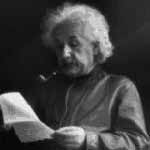 Thus
the last and most successful creation of theoretical physics, namely
quantum mechanics (QM), differs fundamentally from both Newton's mechanics,
and Maxwell's e-m field. For the quantities which figure in QM's laws
make no claim to describe physical reality itself, but only probabilities
of the occurrence of a physical reality that we have in view. (Albert
Einstein, 1931)
Thus
the last and most successful creation of theoretical physics, namely
quantum mechanics (QM), differs fundamentally from both Newton's mechanics,
and Maxwell's e-m field. For the quantities which figure in QM's laws
make no claim to describe physical reality itself, but only probabilities
of the occurrence of a physical reality that we have in view. (Albert
Einstein, 1931)
I cannot but confess that I attach only a transitory importance to this interpretation.
I still believe in the possibility of a model of reality - that is to say,
of a theory which represents things themselves and not merely the probability
of their occurrence. On the other hand, it seems to me certain that we must
give up the idea of complete localization of the particle in a theoretical
model. This seems to me the permanent upshot of Heisenberg's principle of uncertainty.
(Albert Einstein, on Quantum Physics, 1934)
Albert Einstein believed that Reality could be represented by spherical force fields, that reality was not founded on chance (as Bohr and Heisenberg argued) but on necessary connections between things (thus his comment 'God does not play dice'!). He was largely correct, Matter is necessarily connected due to the Spherical Standing Wave Structure of Matter, but due to lack of knowledge of the system as a whole (the Universe), and the fact that it is impossible to determine an Infinite system (of which our finite spherical universe is a part - see Cosmology), then this gives rise to the chance and uncertainty found in Quantum Mechanics.
 Max Born Quotes: 'Einstein's Theory of Relativity'
Max Born Quotes: 'Einstein's Theory of Relativity'
(Dover edition, 1962, is a revised version of Max Born's 'Einstein's Theory of Relativity' published by Methuen Company in 1924)
Copernicus' constructive achievement was that his system explained in a simpler way the phenomena which the traditional world system was able to explain only by means of complicated and artificial hypotheses. (Max Born, 1924)
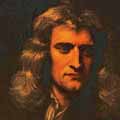 Absolute,
True, and Mathematical Time, of itself, and from its own nature flows
equably without regard to any thing external, and by another name is
called Duration: Relative, Apparent, and Common Time is some sensible
and external (whether accurate or unequable) measure of Duration by the
means of motion, which is commonly used instead of True time; such as
an Hour, a Day, a Month, a Year...
Absolute,
True, and Mathematical Time, of itself, and from its own nature flows
equably without regard to any thing external, and by another name is
called Duration: Relative, Apparent, and Common Time is some sensible
and external (whether accurate or unequable) measure of Duration by the
means of motion, which is commonly used instead of True time; such as
an Hour, a Day, a Month, a Year...
For the natural days are truly unequable, though they are commonly considered
as equal, and used for a measure of time: Astronomers correct this inequality
for their more accurate deducing of the celestial motions. It may be, that
there is no such thing as an equable motion, whereby time may be accurately
measured. All motions may be accelerated and retarded, but the True, or equable
progress, of Absolute time is liable to no change. The duration or perseverance
of the existence of things remains the same, whether the motions are swift
or slow, or none at all..
Concerning Space Newton expresses similar opinions. He says:
 Absolute
Space, in its own nature, without regard to any thing external, remains always
similar and immovable. Relative Space is some moveable dimension or measure
of the absolute spaces; which our senses determine, by its position to bodies;
and which is vulgarly taken for immovable space...
Absolute
Space, in its own nature, without regard to any thing external, remains always
similar and immovable. Relative Space is some moveable dimension or measure
of the absolute spaces; which our senses determine, by its position to bodies;
and which is vulgarly taken for immovable space...
And so instead of absolute places and motions, we use relative ones; and that
without any inconvenience in common affairs; but in Philosophical disquisitions,
we ought to abstract from our senses, and consider things themselves, distinct
from what are only sensible measures of them. For it may be that there is no
body really at rest, to which the places and motions of others may be referred...
(Sir Isaac Newton, Max Born, 1924)
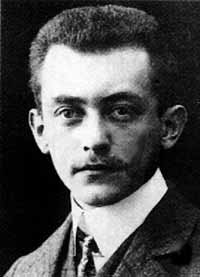 Having
recognised that the individual points in Newton's absolute space have
no physical reality, we must now inquire what remains of this concept
at all. (Max Born, 1924)
Having
recognised that the individual points in Newton's absolute space have
no physical reality, we must now inquire what remains of this concept
at all. (Max Born, 1924)
Inertial actions arise whether accelerations occur, and these are nothing more than changes of velocity in absolute space.. (Max Born, 1924)
The undulatory, or wave theory, on the other hand, sets up an analogy between the propagation of light and the motion of waves on the surface of water or sound waves in air. For this purpose it has to assume the existence of an elastic medium that permeates all transparent bodies; this is the luminiferous ether. The individual particles of this substance merely oscillate about their positions of equilibrium. That which moves on as the light wave is the state of motion of the particles and not the particles themselves. (Max Born, 1924)
In liquids and gases there is no elastic resistance to the lateral displacement of the particles, but only to the change of volume, i.e., compressions and rarefactions. ..On the other hand, in solid bodies, on account of the elastic rigidity which opposes lateral displacements, three waves, one longitudunal and two transverse, with different velocities, can be transmitted in each direction. (Max Born, 1924)
Faraday came from no learned academy; his mind was not burdened with traditional ideas and theories. (Max Born, 1924)
 We
recall that Maxwell took the concept of displacement as the foundation
of his argument, and we interpreted this visually as meaning that in
the smallest parts or molecules of the ether, just as in the molecules
of matter, an actual displacement and separation of the electric (or
magnetic) fluid occur. So far as this idea concerns the process of electric
polarisation of matter, it is well founded; it is also adopted in the
modern modification of Maxwell's theory, the theory of electrons, for
numerous experiments have rendered certain that matter has a molecular
structure and that every molecule carries displaceable charges. But this
is by no means the case for the free ether; here Maxwell's idea of displacement
is purely hypothetical, and its only value is that it provides a visualizable
image for the abstract laws of the field. (Max Born, 1924)
We
recall that Maxwell took the concept of displacement as the foundation
of his argument, and we interpreted this visually as meaning that in
the smallest parts or molecules of the ether, just as in the molecules
of matter, an actual displacement and separation of the electric (or
magnetic) fluid occur. So far as this idea concerns the process of electric
polarisation of matter, it is well founded; it is also adopted in the
modern modification of Maxwell's theory, the theory of electrons, for
numerous experiments have rendered certain that matter has a molecular
structure and that every molecule carries displaceable charges. But this
is by no means the case for the free ether; here Maxwell's idea of displacement
is purely hypothetical, and its only value is that it provides a visualizable
image for the abstract laws of the field. (Max Born, 1924)
 Lorentz
proclaimed the very radical thesis which had never before been asserted
with such definiteness:
Lorentz
proclaimed the very radical thesis which had never before been asserted
with such definiteness:
The ether is at rest in absolute space.
In principle this identifies the ether with absolute space. Absolute space
is no vacuum, but something with definite properties whose state is described
with the help of two directed quantities, the electrical field E and the magnetic
field H, and, as such is called the ether. (Max Born, 1924)
The most important is that of Lorentz (1904) which closely connected with the theory of relativity. Lorentz assumed that every moving electron contracts in the direction of motion, so that from a sphere it becomes a flattened spheroid of revolution, the amount of flattening depending in a definite way on the velocity. This hypothesis seems at first sight strange. It certainly gives a simpler formula for the way electromagnetic mass depends on velocity than does Abraham's theory, but this in itself does not justify it. (Max Born, 1924)
Newton included the infinity of space and time in his fundamental principles and speculated on the question of whether or not the stars were finite in number and filled only a finite part of the infinite space. He came to the conclusion that the number of stars must be infinite and spread rather uniformly through space, for a finite number would collapse in consequence of their mututal attraction. Later it turned out that this argument led to mathematical difficulties of so severe a kind that even modifications of the Newtonian law of gravitation for large distances were contemplated. (Max Born, 1924)
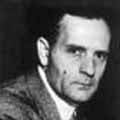 About
1929 the American astronomer Hubble demonstrated the existence of a strange
correlation between distance and speed of the nebulae: they all move
outwards, away from us, and with a velocity which inceases proportional
to the distance; or, in other words, the system of the spiral nebulae
is expanding- just as the primitive comparison of this system with a
gas had suggested to earlier thinkers. Now if one regards the expansion
to have been the same in the past as it is today, one is led to the idea
that the whole system must have had a beginning when all matter was condensed
in a small "supernucleus," and one can calculate the time interval
since this "beginning of the world" and the present instant.
The result obtained from Hubble's data was 2000 to 3000 millions of years.
About
1929 the American astronomer Hubble demonstrated the existence of a strange
correlation between distance and speed of the nebulae: they all move
outwards, away from us, and with a velocity which inceases proportional
to the distance; or, in other words, the system of the spiral nebulae
is expanding- just as the primitive comparison of this system with a
gas had suggested to earlier thinkers. Now if one regards the expansion
to have been the same in the past as it is today, one is led to the idea
that the whole system must have had a beginning when all matter was condensed
in a small "supernucleus," and one can calculate the time interval
since this "beginning of the world" and the present instant.
The result obtained from Hubble's data was 2000 to 3000 millions of years.
Meanwhile the relativistic cosmology initiated by Einstein and De Sitter began
to ripen in the hands of Friedmann, Lemaitre, Tolman, Robertson and others.
A series of new possible models of the world were discovered between the extreme
cases found by Einstein and De Sitter, and the question arose which of them
fitted the empirical facts best, in particular those facts established by Hubble.
Today there are many ramifications and refinements of the theory and there
has been so enormous an increase of observational material that it is difficult
to judge the actual situation. Earlier ideas which seemed to be most fertile
have turned out to be too narrow or even wrong. (Max Born, 1924)
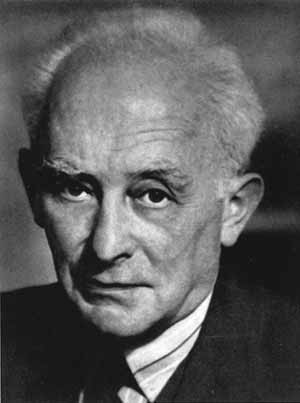 Max
Born Quantum Mechanics Quotes
Max
Born Quantum Mechanics Quotes
No concealed parameters can be introduced with the help of which the indeterministic description could be transformed into a deterministic one. Hence if a future theory should be deterministic, it cannot be a modification of the present one but must be essentially different. (Max Born, on Quantum Physics, 1949)
If God has made the world a perfect mechanism, He has at least conceded so much to our imperfect intellects that in order to predict little parts of it, we need not solve innumerable differential equations, but can use dice with fair success. (Max Born, on Quantum Physics)
One obvious objection to the hypothesis of an elastic Aether (Space) arises from the necessity of ascribing to it the great rigidity it must have to account for the high velocity of Waves. Such a substance would necessarily offer resistance to the motion of heavenly bodies, particularly to that of planets. Astronomy has never detected departures from Newton's Laws of Motion that would point to such a resistance. (Max Born, on Quantum Physics, 1924)
Max Born Biography
(1882 - 1970)
 Max
Born (December 11, 1882 – January 5, 1970) was a Jewish
German mathematician and physicist and was the only child of Gustav
Born and Margarete Kauffmann. He is also the maternal grandfather of
British / Australian singer and actress Olivia Newton-John.
Max
Born (December 11, 1882 – January 5, 1970) was a Jewish
German mathematician and physicist and was the only child of Gustav
Born and Margarete Kauffmann. He is also the maternal grandfather of
British / Australian singer and actress Olivia Newton-John.
Initially educated at the König-Wilhelm-Gymnasium, Born went on to study at the University of Breslau followed by Heidelberg University and Zurich University. During this period he came into contact with many prominent scientists and mathematicians including Klein, Hilbert, Minkowski, Runge, Schwarzschild, and Voigt.
In 1909 he was appointed a lecturer at the University of Göttingen where he worked until 1912 when he moved to work at the University of Chicago. In 1919 after a period in the German army he became a professor at the University of Frankfurt am Main, and then professor at Göttingen, 1921. During this period, he formulated the now-standard interpretation of the probability density in the Schrödinger equation of quantum mechanics, for which he was awarded the Nobel Prize in Physics in 1954, some three decades later. In 1933 he left Germany to escape anti-Semitism. He went to lecture at the University of Cambridge, until 1936, and the Edinburgh University to 1953.
Albert Einstein was a friend of Born's, and it was in a letter to him in 1926 that Einstein made his famous remark regarding quantum mechanics, often paraphrased as "God does not play dice with the universe."
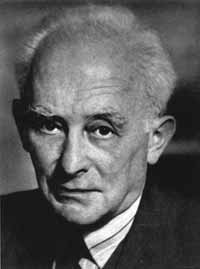 After
World War II, Max and Hedwig Born retired from England, to Germany, but
his children remained in the Commonwealth.
After
World War II, Max and Hedwig Born retired from England, to Germany, but
his children remained in the Commonwealth.
His published works include;
The Restless Universe - a popularization for students
Einstein's Theory of Relativity 1924. (The 1962 Library of Congress 62-5801
Dover edition, page 348 lists a table documenting the observed and calculated
values for the precession of the perihelion of Mercury, Venus, and Earth.)
Dynamics of Crystal Lattices,
Optics,
Natural Philosophy of Cause and Chance and
Zur Quantummechanik.
He was awarded the 1954 Nobel Prize in Physics, the Stokes Medal and the 1950
Hughes Medal. In Natural Philosophy of Cause and Chance, Born solves Kant's
puzzle of the Ding an Sich, the thing in itself.
Max Born Biography
https://en.wikipedia.org/wiki/Max_Born
Help Humanity
"You must be the change you wish to see in the world."
(Mohandas Gandhi)
 "When forced to summarize the general theory of relativity in one sentence:
Time and space and gravitation have no separate existence from matter. ... Physical objects are not in space, but these objects are spatially extended. In this way the concept 'empty space' loses its meaning. ... The particle can only appear as a limited region in space in which
the field strength or the energy density are particularly high. ...
"When forced to summarize the general theory of relativity in one sentence:
Time and space and gravitation have no separate existence from matter. ... Physical objects are not in space, but these objects are spatially extended. In this way the concept 'empty space' loses its meaning. ... The particle can only appear as a limited region in space in which
the field strength or the energy density are particularly high. ...
The free, unhampered exchange of ideas and scientific conclusions is necessary for the sound development of science, as it is in all spheres
of cultural life. ... We must not conceal from ourselves that no improvement in the present depressing situation is possible without
a severe struggle; for the handful of those who are really determined to do something is minute in comparison with the mass of the lukewarm
and the misguided. ...
Humanity is going to need a substantially new way of thinking if it is to survive!" (Albert Einstein)
 We can now deduce the most simple science theory of reality - the wave structure of matter in space. By understanding how we and everything around us are interconnected
in Space we can then deduce solutions to the fundamental problems of human knowledge in physics, philosophy, metaphysics, theology, education, health, evolution and ecology, politics and society.
We can now deduce the most simple science theory of reality - the wave structure of matter in space. By understanding how we and everything around us are interconnected
in Space we can then deduce solutions to the fundamental problems of human knowledge in physics, philosophy, metaphysics, theology, education, health, evolution and ecology, politics and society.
This is the profound new way of thinking that Einstein
realised, that we exist as spatially extended structures of the universe - the discrete and separate body an illusion. This simply confirms the
intuitions of the ancient philosophers and mystics.
Given the current censorship in physics / philosophy of science journals (based on the standard model of particle physics / big bang cosmology) the internet is the best hope for getting new knowledge
known to the world. But that depends on you, the people who care about science and society, realise the importance of truth and reality.
It is Easy to Help!
Just click on the Social Network links at top of page, or copy a nice image or quote you like and share it. We have a wonderful collection of knowledge from the greatest minds in human history, so people will appreciate your contributions. In doing this you will help a new generation of scientists see that there is a simple sensible explanation of physical reality (One Substance, One Law) - the source of truth and wisdom, the only cure for the madness of man! Thanks! Geoff Haselhurst (Updated May, 2025)
A new scientific truth does not triumph by convincing its opponents and making them see the light, but rather because its opponents eventually die, and a new generation grows up that is familiar with it. (Max Planck, 1920)
"All that is necessary for evil to succeed is for good people to do nothing."
(Edmund Burke)
"In a time of universal deceit - telling the truth is a revolutionary act."
(George Orwell)
"Hell is Truth Seen Too Late."
(Thomas Hobbes)
Legal Disclaimer and Privacy Policy












